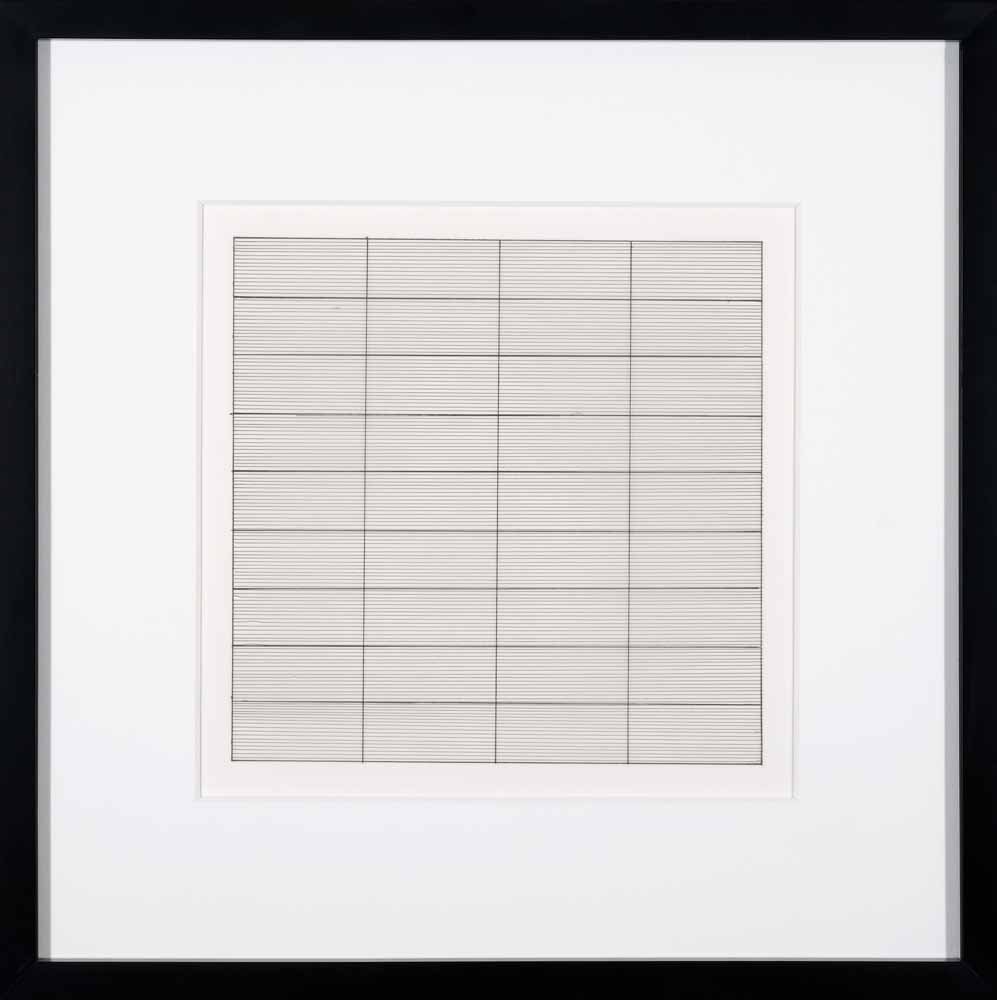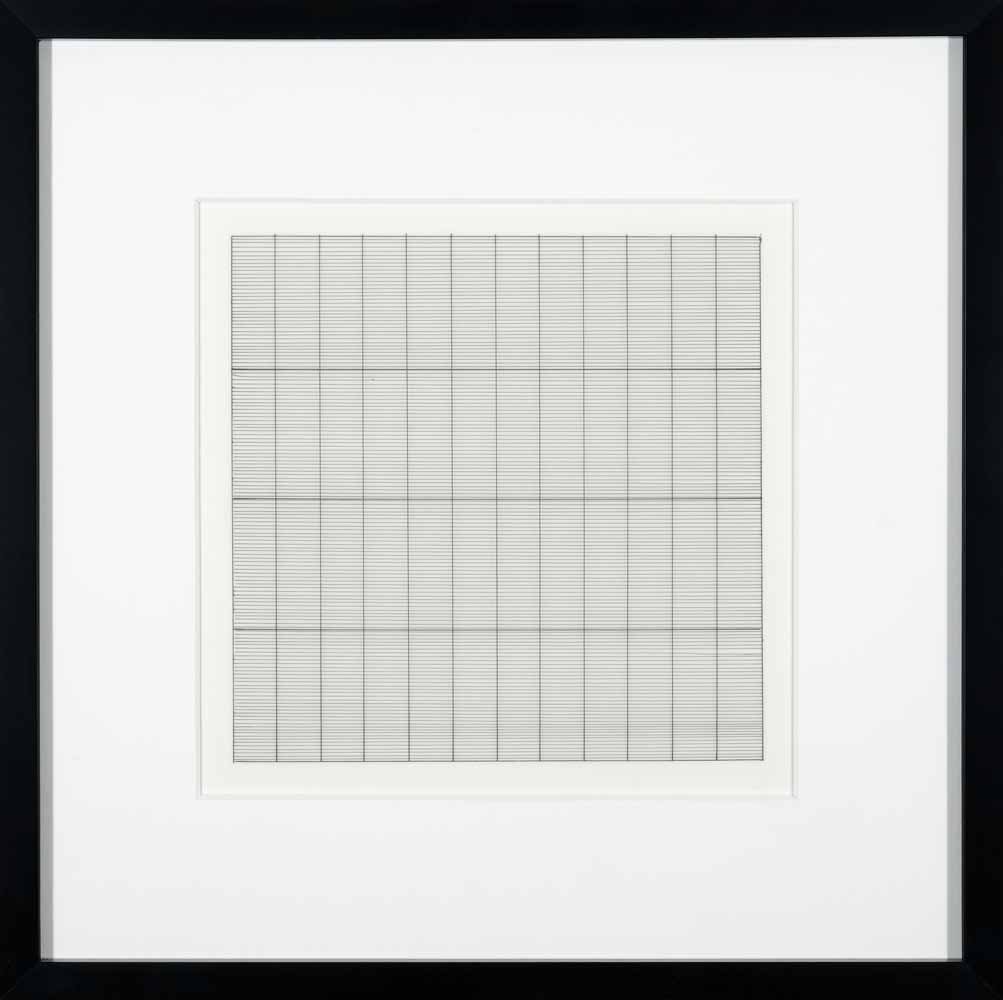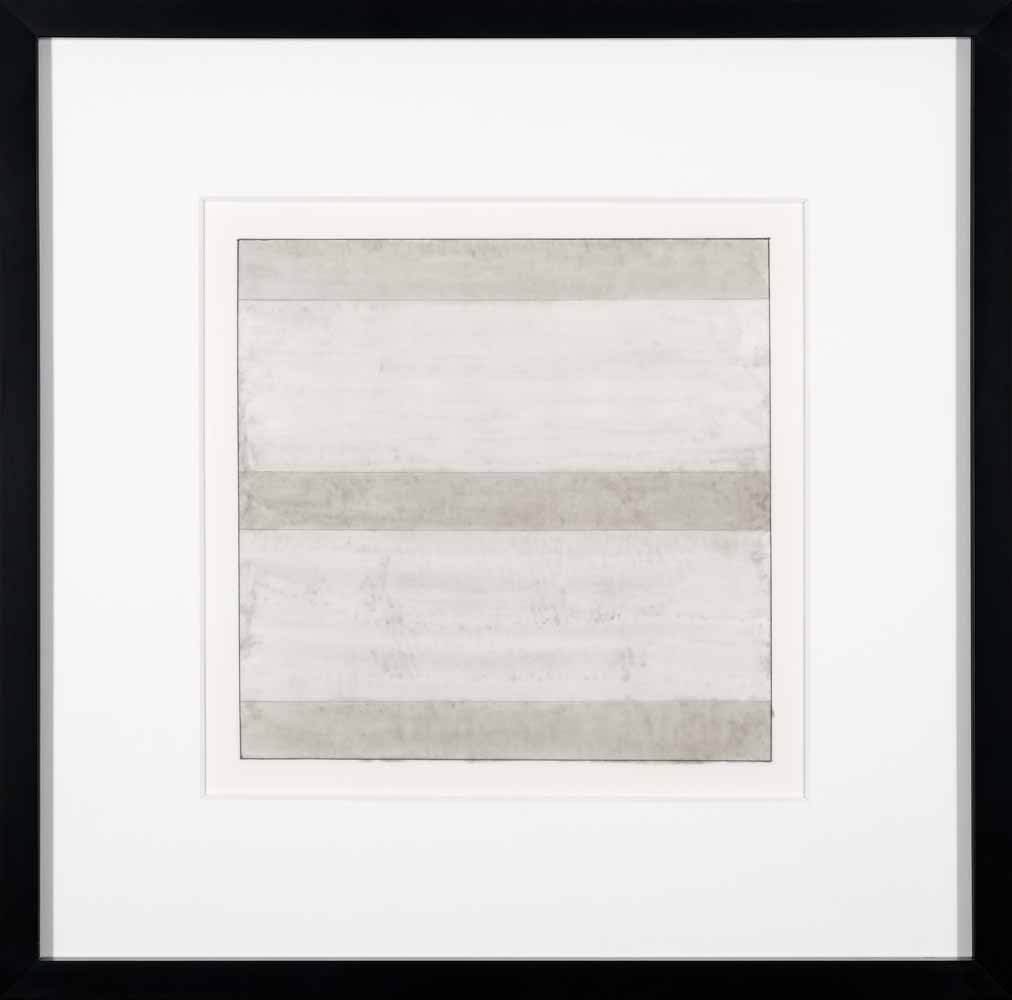Image Source: WIKIPEDIAAGNES MARTIN
1912-2004
One of the leading contemporary artists in 20th-century America, Agnes Martin was known for her monochromatic, geometric grid painting that combined paint and faintly wavering pencil lines. She is considered a forerunner of Minimalist art. She began her career in New York, and spent her later years in New Mexico from where she managed to maintain a national reputation.
She lived most of her life “fundamentally as a loner” (Cotter). In 1967 when her career was ascending in New York, she left the city, traveled the country in a pick-up camper and quit painting for seven years. Likely her desire to be alone was related to her innate way of dealing with turmoil, which was to withdraw unto herself and go into a trance-like state, clinically defined as catatonia. She later told stories of these reactions that began in her childhood and included an experience in Bombay, India where she fell into such a deep trance that she was hospitalized for a month.
AGNES MARTIN BIOGRAPHY
-
One of the leading contemporary artists in 20th-century America, Agnes Martin was known for her monochromatic, geometric grid painting that combined paint and faintly wavering pencil lines. She is considered a forerunner of Minimalist art. She began her
Agnes Martin was born in Maklin, Saskatchewan in 1912 to a wheat-farming family. Her father died when she was two-years old, and for the next two years the family lived on a farm with her mother’s father, and then moved to Calgary Alberta. Arriving in the United States in 1932, she became a United States citizen in 1940. She moved to Bellingham, Washington, where she earned her elementary school teaching credentials from the Western Washington College of Education and taught in a local school. She then moved to New York City to study art at Columbia University and earned a Bachelor of Arts degree in 1941 and a Master of Fine Arts degree in 1954. She taught art intermittently during the 1940s and 50s to children in Harlem and at the University of New Mexico in Albuquerque. She also pursued her own painting, which in those days included surrealist figural work and landscape in watercolor.
In New York, where she settled for ten years beginning in 1957, she was introduced to a circle of avant-garde artists by art dealer Betty Parsons, and she shared a cheap studio warehouse building with modernists Ellsworth Kelly, Jack Youngerman, Robert Indiana, Ann Wilson, Ad Reinhardt, and Lenore Tawney. The group became very tight knit, and broke away from what they regarded as the excesses of Abstract Expressionism.
Influenced by Kelly who was painting in large geometric bands, Indiana who did hard-edge geometrical paintings and sculpture, and Youngerman who did clean-cut minimalism, Martin began to find the style that would become her signature work. She began with monochromatic rectangular painting that resembled the expression of Mark Rothco, although she sometimes added grid-like borders or collage elements such as small pieces of canvas and nails. After the mid 1960s, most of her paintings were grid designs, with some color and references to nature with titles such as Blue Flower (1962) and Orange Grove (1965). But in future years, her work became totally monochromatic and non-objective with no references to identifiable subjects.
Martin regarded the Abstract Expressionists as very egocentric and romantic because of their heavy use of paint and spontaneous designs. She strove to be more classical and de-personalized from her painting and went to great lengths to plan her work with careful horizontal and vertical lines and to establish a tone of serenity and control—a distain of chaos.
These years in New York brought her much public attention and acclaim. From 1968 to 1967, she had one-woman shows each year beginning with Betty Parsons at the Parsons Gallery. And later in her career, she had over fifty exhibitions in Europe and across America.
In 1967, Martin left New York City, and, deciding to stay away from painting in order to clear her head, travelled through Canada and the western United States. She then settled permanently in New Mexico, living first in Cuba where she built an adobe studio and home by hand on a remote mesa. In 1977, she moved to Galisteo, and in the early 1990s to Taos. She led a simple life of painting, reading, and being with friends, and in 1999, was named Distinguished Artist by the Santa Fe Rotary Foundation.
Agnes Martin died at age 92 in a retirement home in Taos on December 16, 2004.
askART














Lithograph on vellum transparency paper
9 x 9 inches
INQUIRE